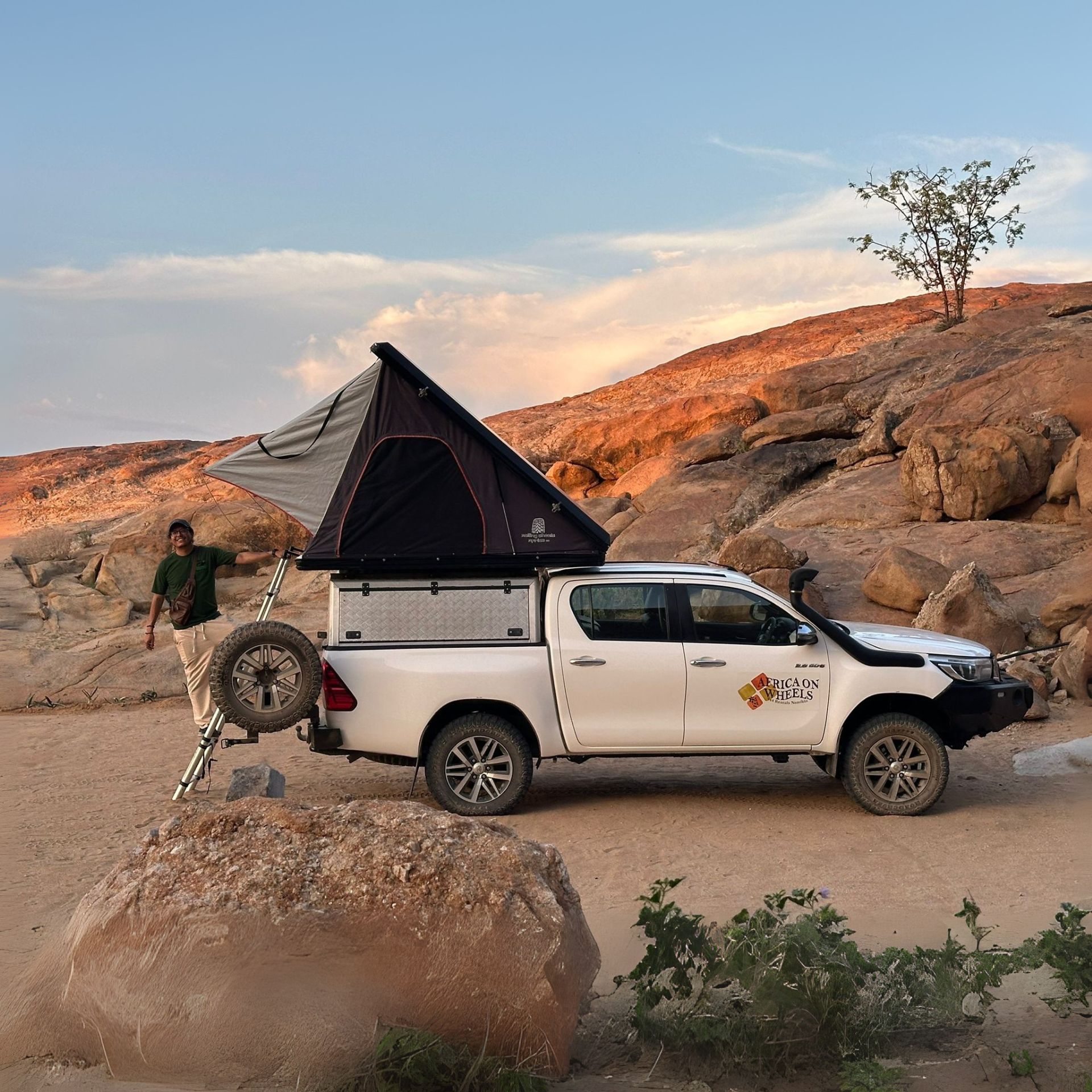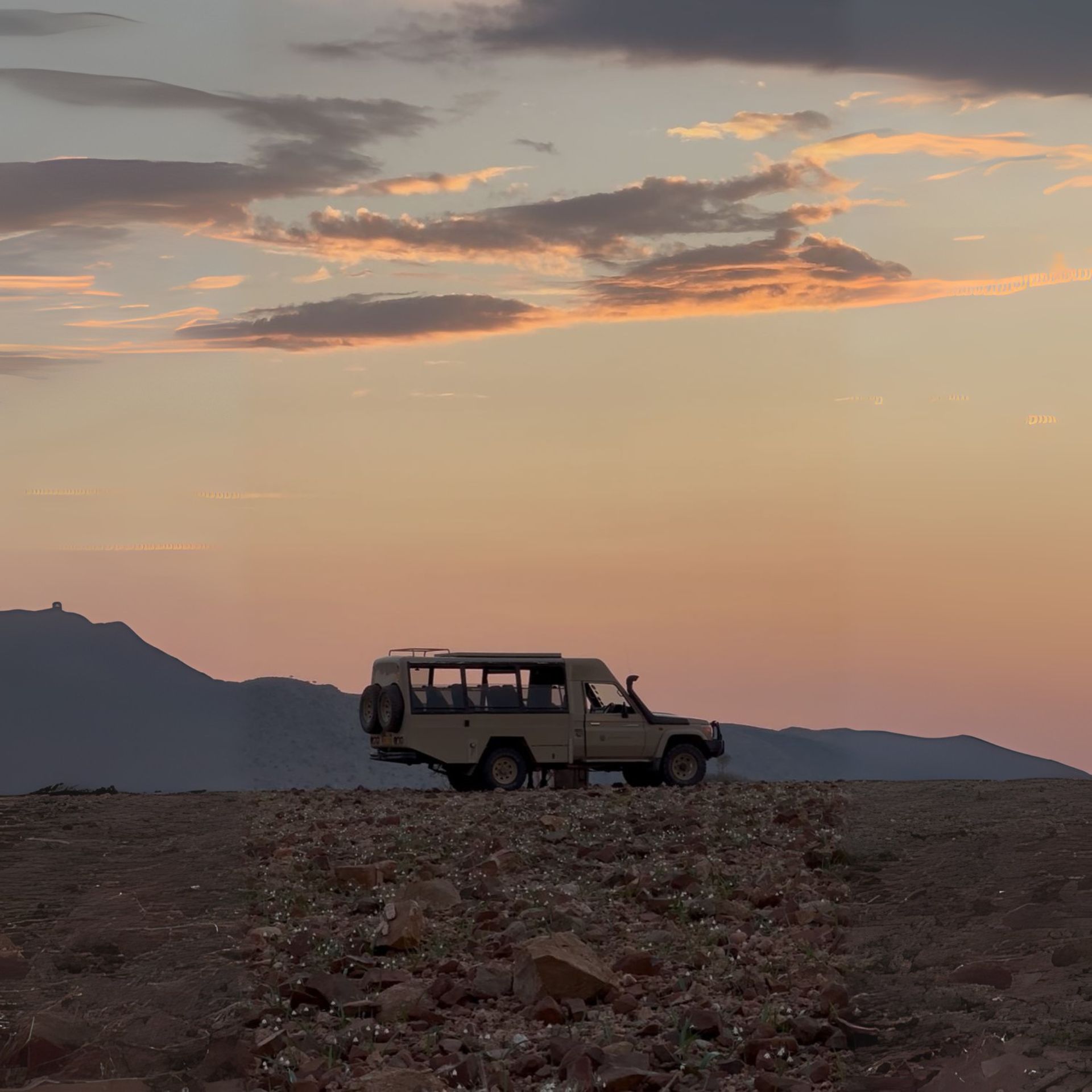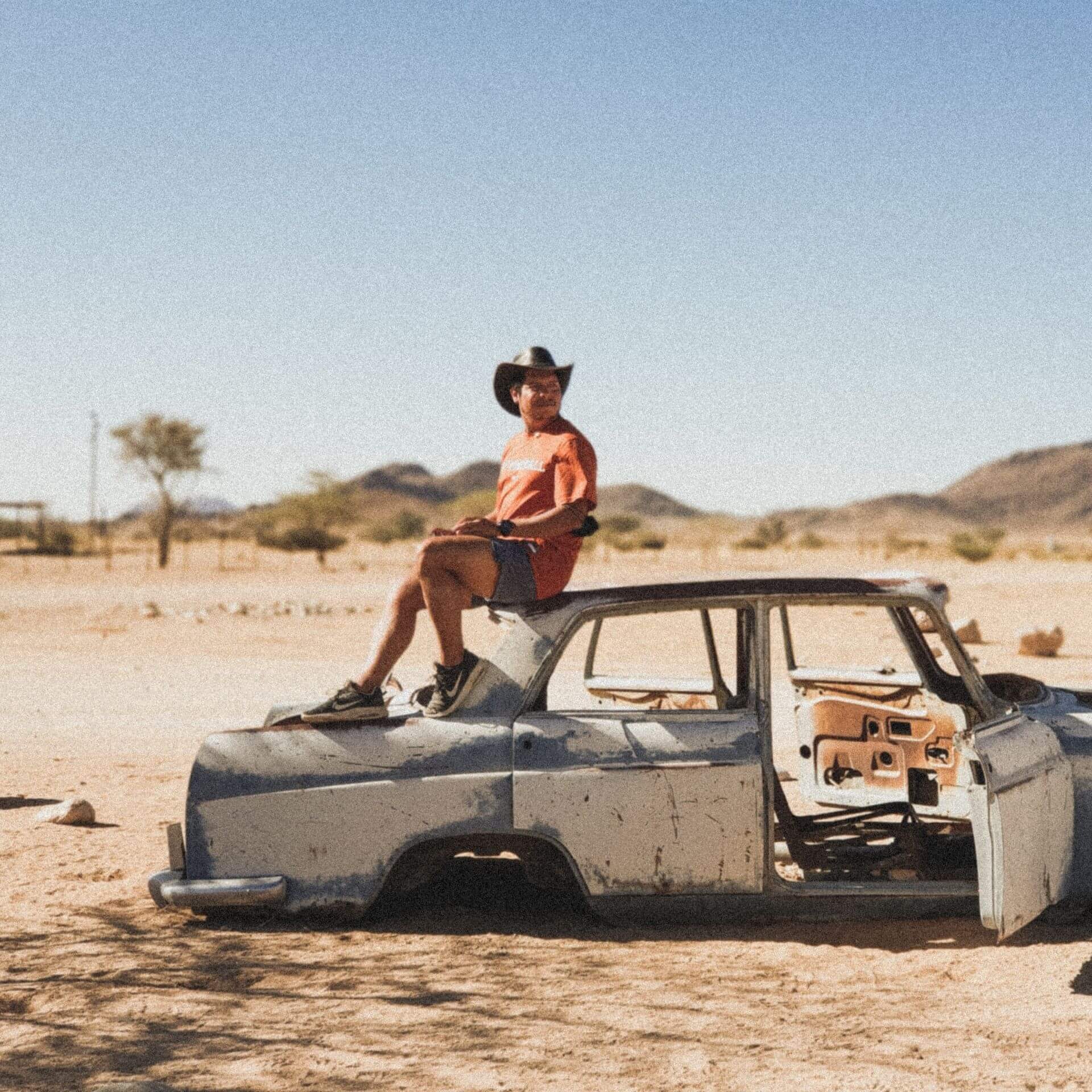Conservation has become one of the most important topics in tourism in recent years—and Wilderness has been leading this mission for decades.
There’s a critical intersection where conservation, culture, and tourism meet. It’s here that travelers, tour operators, and local communities all play a vital role.
It all starts with us. We are the ones who decide where to travel, how we want to travel, and how we want to impact the local communities. I traveled to the remote region of Damaraland in Namibia and learned how safari companies can make a big difference in the lives of local people and the wildlife roaming this part of the world.
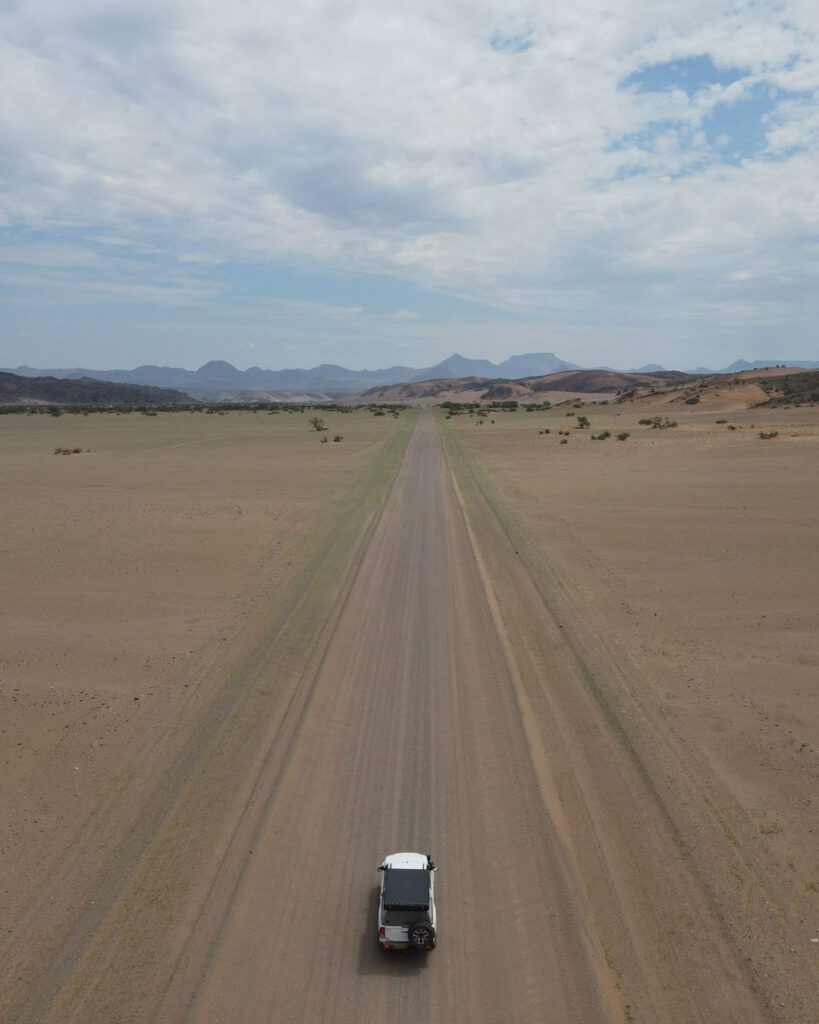
A Personal Journey into Purposeful Conservation
My journey took me to three different Wilderness camps, including Desert Rhino Camp, one of Wilderness Safaris’ flagship lodges. Here, conservation isn’t a buzzword—it’s the foundation of everything. This remote camp, in partnership with the Save the Rhino Trust (SRT) and three local conservancies, works to protect the desert-adapted black rhino—one of the world’s rarest mammals—offering a firsthand look at how travel can create real impact.
Stepping into the heart of Damaraland, the silence felt sacred. I joined a team of SRT trackers, and at dawn, we set out in a 4×4 into Namibia’s vast wilderness to search for one of the world’s most endangered species. The thrill wasn’t just in seeing the animal—it was in knowing that every step was supported by years of community-led conservation and scientific monitoring.
Wilderness (like any responsible operator) doesn’t promise guaranteed sightings—but it offers an authentic glimpse into the daily work of rhino protection. The camp exists solely to support these efforts, and guest contributions help fund them. Seeing a rhino up close wasn’t just a highlight of my trip—it was a living testament to what is possible when eco-tourism and tangible conservation come together.
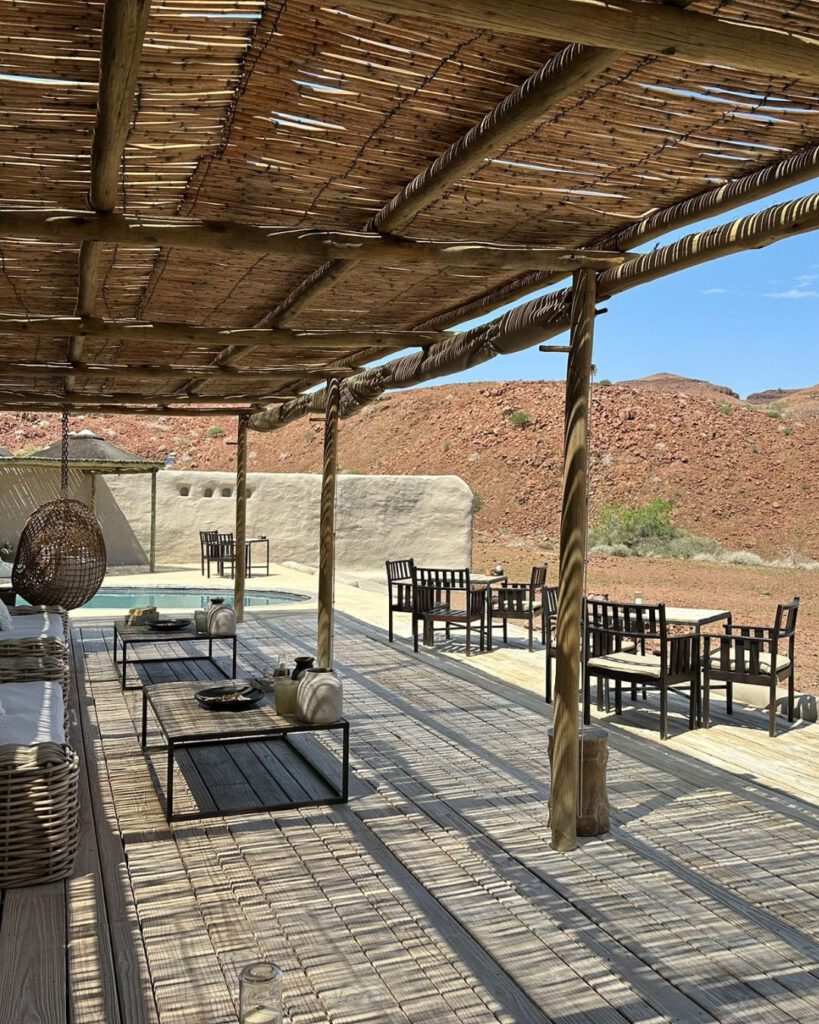
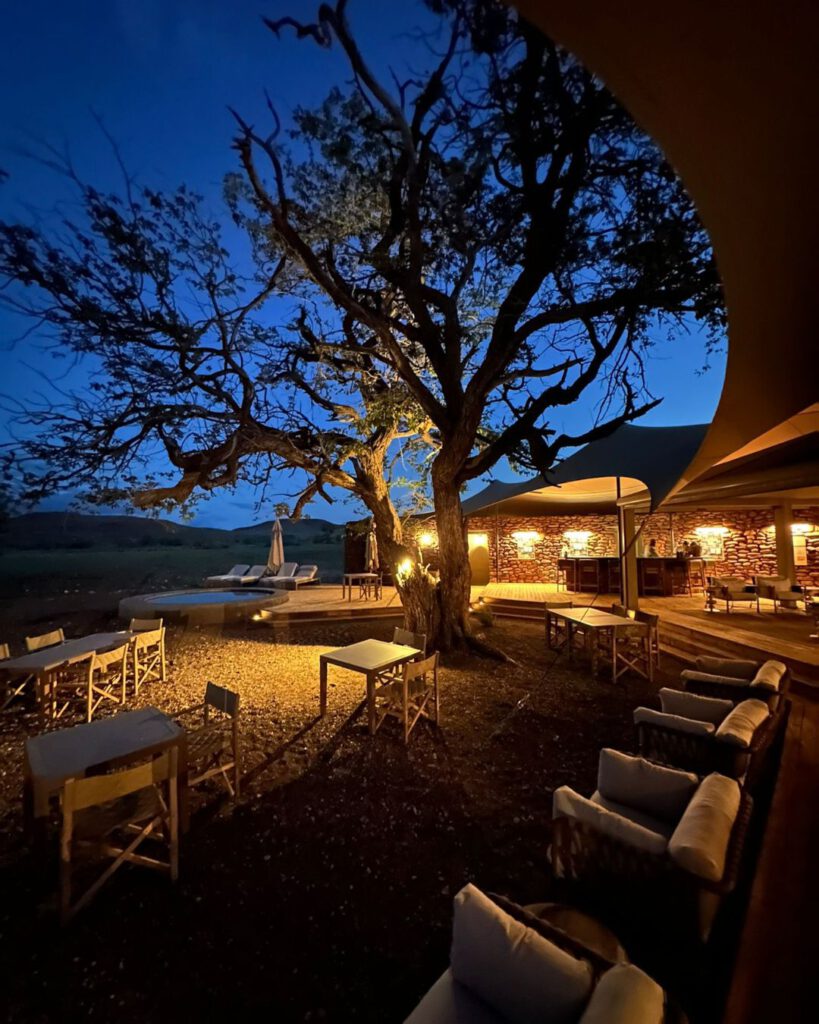
Saving Namibia’s Rhinos
Desert Rhino Camp was established two decades ago as a research base supporting the SRT. Over time, it evolved into a premier eco-lodge—and the rhino population in this region has since quadrupled thanks to the coalition’s work.
Today, the Palmwag Concession—a 500,000-hectare reserve—is managed under a community-based natural resource model. Revenue is shared with local Big Three conservancies, and local trackers are hired, paid, and trained to protect wildlife. This model has proven that community-led conservation often outperforms traditional national parks in terms of both ecological recovery and local benefit.
Wilderness returns about 11% of each guest’s fee to SRT and local community programs. Part of my camp fee helped fund ranger salaries, vehicle upgrades, and school supplies in neighboring villages. I met community members who benefit—not as passive observers, but as stakeholders. This type of integration—where nomadic Damara families can propose and receive funding for local needs—is rarely seen in conventional tourism models.
Read more: How to plan a road trip in Namibia

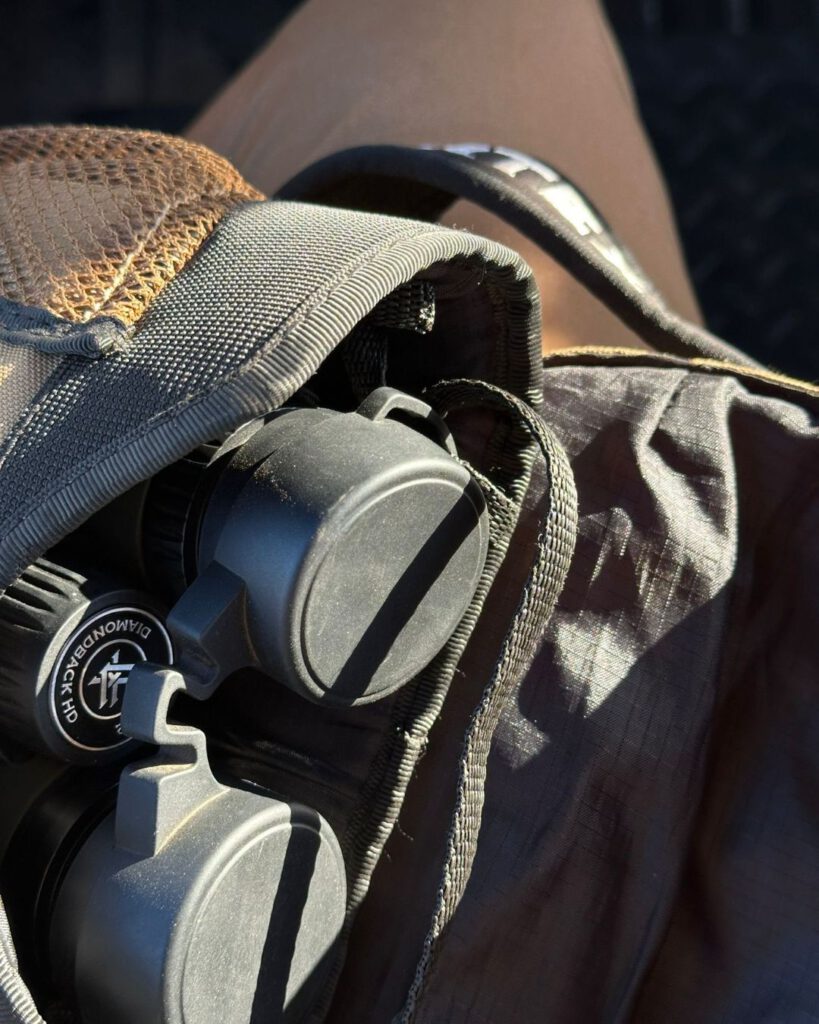
A Day at Damaraland with Wilderness
My room was a raised Meru-style tent on a wooden deck shaded by acacia branches. The interiors featured natural stone and canvas, with solar panels powering the lights, water heaters, and outlets. In two of the three camps I visited, my tent had its own stargazing deck and access to reverse-osmosis filtered water to minimize plastic waste—the camp aims to be entirely free of single-use plastics.
After dinner under paper lanterns and firelight, I joined guests from around the world in discussions about wildlife protection in Africa. It was fascinating to see everyone’s engagement in conservation efforts.
Travelers don’t book with Wilderness just for a luxury safari. They want to understand animal behavior, learn about environmental issues, and contribute—even in small ways—to protecting these fragile ecosystems.
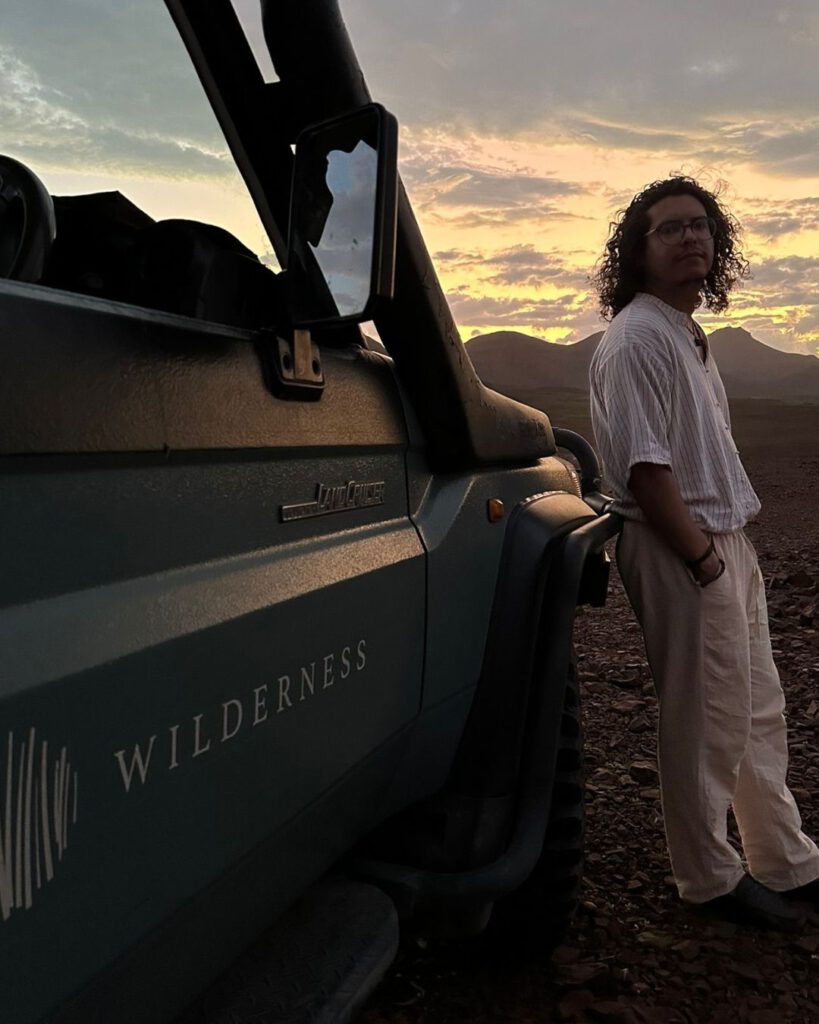
Confronting Human–Wildlife Conflict
Conservation here isn’t just about protection—it’s about reconciliation. Across Damaraland, herders raise livestock, and farmers cultivate small plots of land. From a European perspective, it can be hard to grasp the complexity of human–wildlife conflict. Elephants trample crops, predators occasionally kill goats. This creates resentment and fuels conflict.
Wilderness and its partners offer pragmatic solutions: hiring locals as wildlife guardians, building communal water infrastructure, and reinvesting tourism revenue in schools and health clinics.
While exploring the Damaraland landscape, my guide and ranger explained how tourism income had funded a new borehole and grazing fence. With this security, communities found it easier to tolerate—and even support—the presence of wild animals. When wildlife becomes valuable, people stop seeing it as a threat.
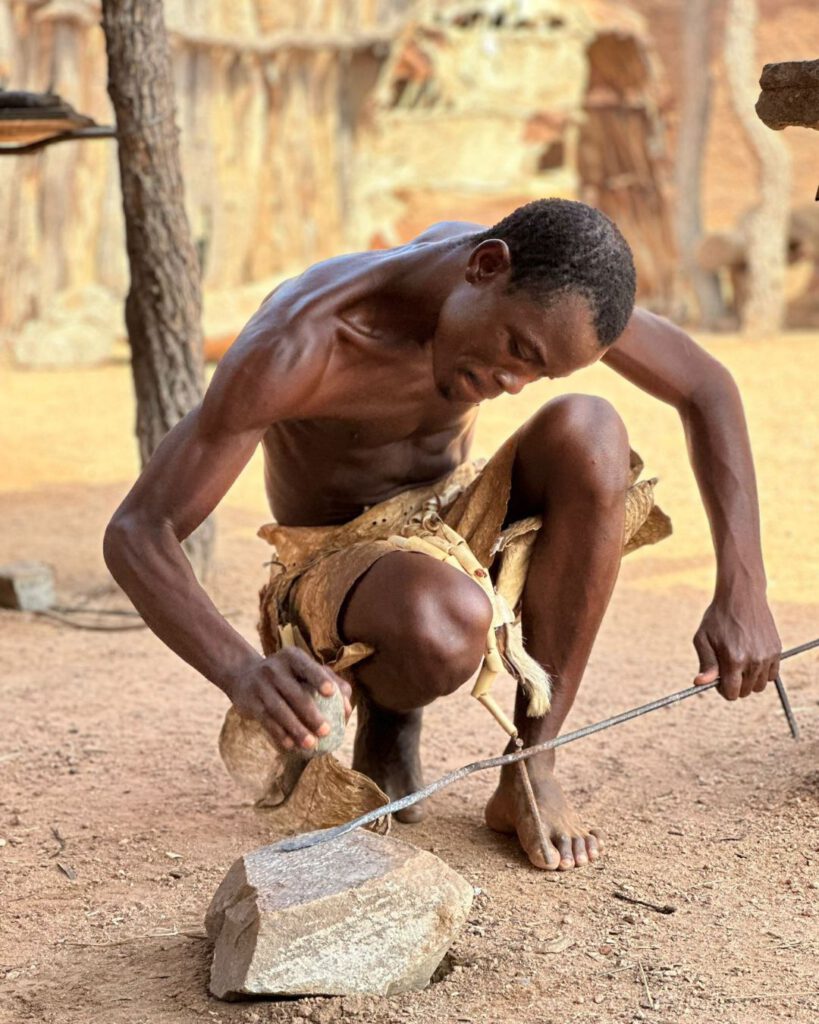
Broader Conservation Across Wilderness Camps
The three camps in Damaraland are just one part of Wilderness Safaris’ wider network across Namibia and southern Africa. Other camps, such as Hoanib Skeleton Coast Camp, combine remote wilderness experiences with research on desert-adapted lions and rhinos in some of Africa’s harshest conditions.
Wilderness also supports astrotourism and environmental education—using dark skies not only as a draw for travelers but also as a tool for sustainable development in Namibia.
Although I only visited the three camps in Damaraland, many travelers looking to understand Namibia’s complexity and beauty also explore other regions, like Sossusvlei and the Caprivi Strip.

The Magic of Tracking Rhinos in Southern Africa
Tracking begins before dawn with two teams: one sets out on foot and by vehicle to look for signs of rhinos, while guests follow in vehicles, covering open areas where rhinos may be resting. Once trackers locate fresh tracks, the rest of the team moves into position. Guests then approach on foot—slowly and quietly—staying 100–200 meters away.
It’s a humbling moment: standing near a creature that could disappear from the earth entirely. These rhino walks aren’t just wildlife encounters—they’re stories in motion. Stories of survival, restoration, and what decades of training and trust can accomplish when peace replaces poaching.

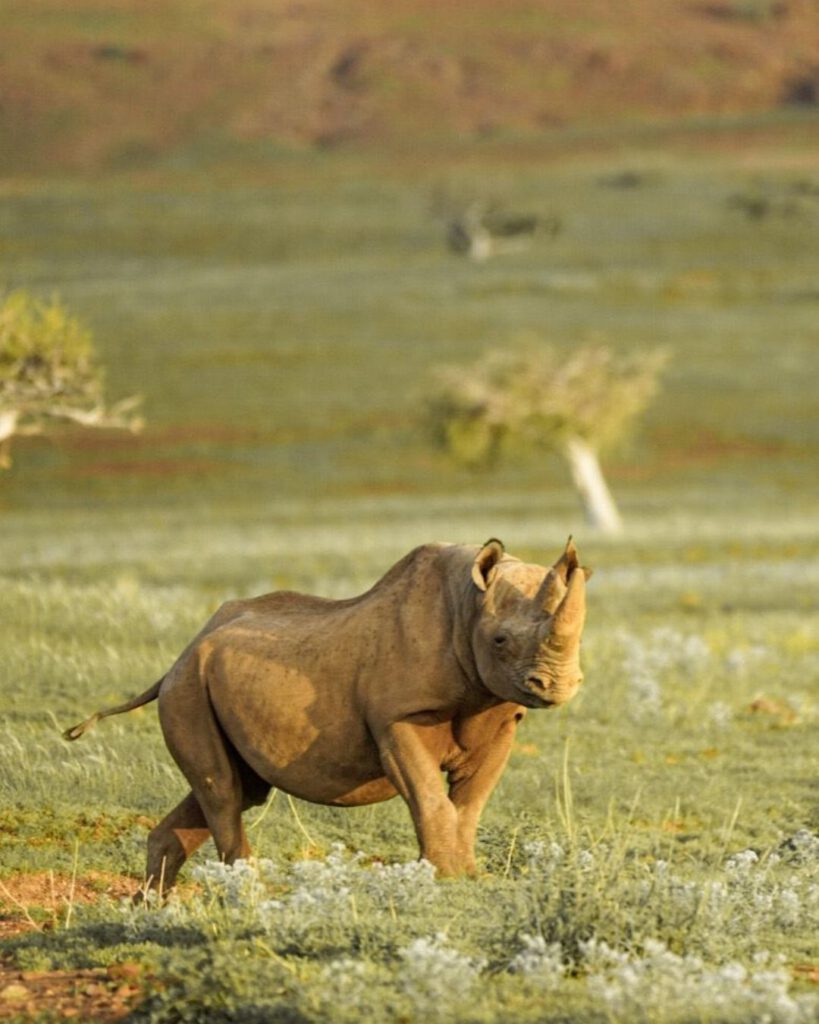
Conservation Travel with Meaning
What sets Wilderness Safaris apart is how tourism becomes part of the solution, not the problem. Guests don’t just observe—they contribute financially and morally to a system that supports both wildlife and people. Many camps are built on community leasehold land, giving locals both decision-making power and revenue from day one.
This model proves that conservation and development don’t have to be at odds. The number of black rhinos in the Palmwag Concession has quadrupled since the 1980s. Poaching has dropped by nearly 80%. Tourism income now funds both ranger patrols and education in the same breath.
Tourism That Does More Than Entertain
On the surface, Wilderness offers luxury: private tents, gourmet meals in the bush, and sweeping desert views for some of the world’s most discerning travelers. But beneath that beauty lies a deeper design—one that merges tourism with scientific wildlife monitoring, community empowerment, and sustainability.
The conservation projects in Damaraland have become a living example of how community-based natural resource management (CBNRM), as pioneered in Namibia, can be more effective than fortress-style national parks in protecting biodiversity—especially when local communities are empowered to lead.
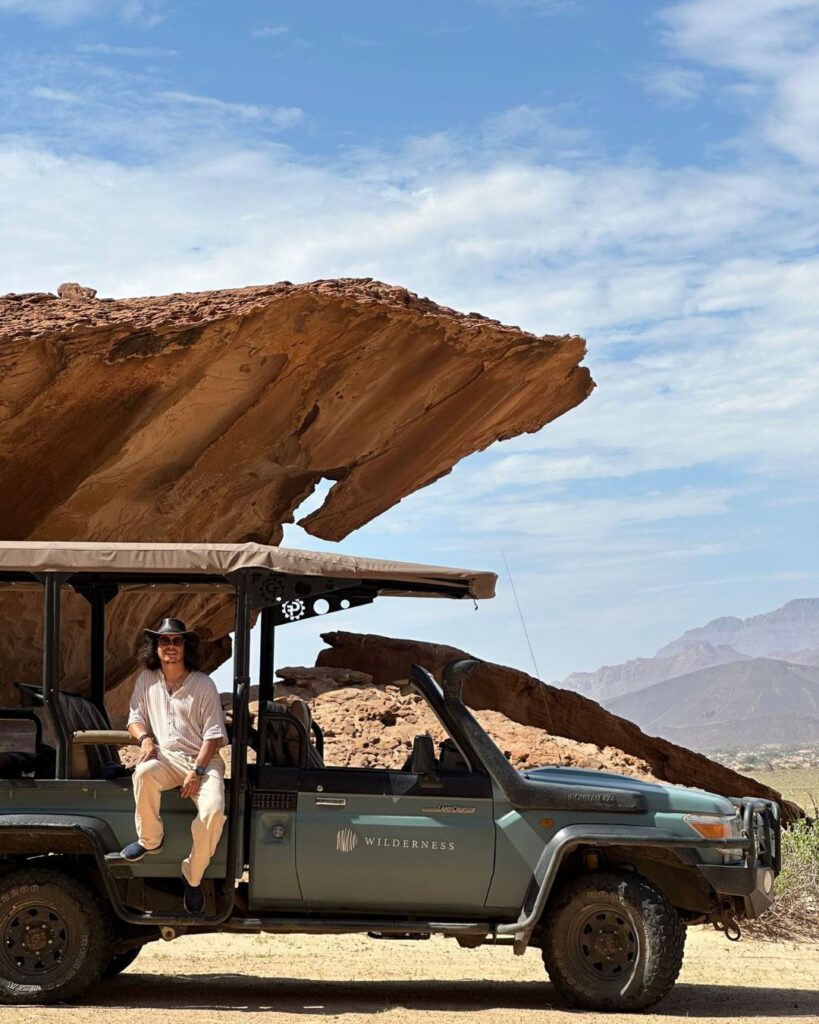
Why It Matters—and Why You Should Care
Rhino poaching surged in Namibia in 2022—46 rhinos were killed in Etosha National Park alone. Desert Rhino Camp and its partners are among the few standing on the frontlines to reverse this trend. When you stay there, you are not a passive guest—you’re a contributor. You help fund ranger training, law enforcement patrols, school supplies, and solar-powered infrastructure.
Each morning, I woke to silence, walked across the desert, and returned to dinner under the stars feeling like I was part of something greater—a movement proving that conservation and development can thrive together.
Conservation Travel as a Promise
Travel isn’t just a checklist—it can be a promise. By choosing Wilderness, you don’t just witness wildlife—you invest in its survival. You support trained local trackers, renewable energy, and a tourism model that uplifts ecosystems and communities alike.
Planning a trip to Africa isn’t easy. But my biggest takeaway is to look beyond the safari checklist. Seek out places where your visit goes beyond photography—to funding conservation, empowering people, and preserving biodiversity.
Wilderness’ work isn’t perfect—but it’s a working model. And in a world where conservation often feels fragile, that matters.



